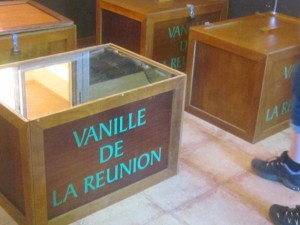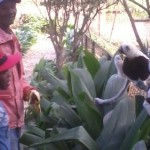Right vs. Wrong
Ethics represents a moral system of determining the right and the wrong, and from that, the good and bad. A person’s ethics may be guided by the greatest amount of benefit their actions or decisions bring another. Or maybe, one’s ethics is based on duties.
One ethical question that stands in environmental protection includes the right and
wrong approach to an environmental “problem” creating a protected area for example, might call for less plot clearing to protect an animal’s habitat, at the sake of a family’s livelihood. To
understand ethics, the subject and object of the ethical point of view is necessitated.
Whose rights are being represented in protected areas?
“Protecting the Environment the Natural Way”
Consumers increasingly seek to play a more ethical role in the market, mainly by choosing what to buy or not to buy. James Carrier points out that certain political economies (capitalistic and neoliberal) encourage buying that unbeknownst to the ethical consumer, is ethically questionable. Carrier focuses on Fair trade coffee in Costa Rica and ecotourism in the Caribbean. Ecotourism can be perceived as a means to financially support locals and the physical environment. Through ecotourism, however, both are commodified. Fair trade coffee can simplify a production process of many actors and stakeholders into two — the farmer and the coffee buyer.

Images can be reproduced as categorical representations in which authoritative, ethical, and often romanticized notions imbued. These images produced for consumers, are often projected by consumers. As such, these images are solidified. Images of ethicality may not be representative of reality. The moment of consumption is the consumer focus rather than looking at how that choice was shaped. The ethical consumer ignores some ethical questions. Carrier believes consumers need to look at themselves rather than solely the product they are buying. Consumers seek producers, and producers create for consumers. Consumers cannot detach themselves from such a cyclical equation.
The way an image is sold can influence a person’s perspective of it being environmentally friendly or ethical. Images are driven by the consumer. An image can frame a safari jeep up close and personal to a lion, but not the radio collar around it’s neck. An indigenous woman might be photographed in vibrant and “ethnic” clothes, but when the tourists and cameras leave, she puts on “Western” clothing. For the consumer who wishes to act ethically, support for a certain form of environmental management can be shaped by images that are projections of themselves.
An NGO or IGO might have what they consider the right intentions in managing and protecting an area, but go about it the wrong way. A group of people may stand by their removal of a species as right for their society, when another group views it as wrong. These questions depend on perspective. Ethical perspectives can be the result of multiple points or singular points of view.

“Indigenous Initiatives and Petroleum Politics in the Ecuadorian Amazon”
Globalization can occur when new economies and environmental degradations are brought to an area. The process shapes likeminded organizations unite in defense of rights in conservation. In Villano, located in Ecuador’s central Amazon province, an oil company called ARCO has created issues for surrounding peoples. Suzana Sawyer gathers data from the Villano Assembly and OPIP the (Organization of Indigenous Peoples of Pastaza). OPIP formed to get communal land rights. Parts of the Amazon have already been observed as changed. Petroleum companies have polluted and degraded land and livelihoods.
With resource management and livelihoods tied to the health of forests, indigenous peoples are seeking justice and greater land involvement. The supported call for rights has solidified an ethnic-national identity. However, the state, which is in control of subterranean rights, have gave access to ARCO. Groups near oil well were represented as representative of indigenous groups, but everyone is included in forest management. Groups near oil well were represented as representative of indigenous groups, but everyone is included in forest management. In Villano, commoditized state property is called “tierra” or “territorio,” which represents ancestral land. A protest supported by other organizations forced the state to involve itself in an agreement with ARCO.
Villano’s situation reflects development is not in itself a wholly good process. The indigenous were put in a position to defend the environment against development —a position usually prescribed to the “developed world”. The physical environment is connected to livelihoods as is described by Alex de Sherbinin et. al. Sawyer connects to Haenn’s work with campesinos in Mexico.
“How to Queer Ecology”
With rises in industrialization, culture is often perceived as an entity both distinct and superior to nature. Alex Johnson approaches the culture-nature dichotomy by comparing it to the relationship between homosexual and heterosexual. Like culture and nature, the sexual orientations are constructed as polar opposites where one is and the “other” is not. He wishes for the language surrounding these dichotomies to change and to start a conversation. Johnson’s argument is based on an essay describing geese as natural because of their monogamous male female relationships. Another article however, shows geese and other animals deemed as “natural” are not all heterosexual. The queer, and the movement of culture and nature in and out of one another is not hard to find. Johnson argues for the “queering” of nature, or taking away the constructed line between culture and nature.

This article reflects binaries that can occur in environmental management or protection, the binaries being the right way or wrong way approach what is taken to be a problem. Images should not be divided into what is or is not natural because those categories will continuously cross over each other. This binaries can be reflective of a certain framework and understanding of the world that is neither right nor wrong.
Similarly, in protected area management, particular practices or styles of management may be seen as more “natural” and conducive to an environment’s health. Nature for instance, may be romanticized in a way that warrants human exclusion; however, it would be hard to find a place that was never inhabited or shaped by humans in some way. Like Johnson, Milton and Vilaça also question the notion of culture and nature as separate. We must stop overlooking the nature in culture and culture in nature.
“Stolen Apes: The Illicit Trade in Chimpanzee, Gorillas, Bonobos, and Orangutans”
The Greater Apes are being illegally traded, by locals with international actors playing a larger role than before. Stiles et. al collected data on primates in 12 African countries and Indonesia through the United Nations (UN), Convention on International Trade in Endangered Species of Wild Fauna and Flora, and NGOs. A Rapid Response Assessment was created to provide recommendations for illegal trade.
They found conservation threats are no longer the number one cause for apes being entered into trade. Now international markets are a big drive. Logging and mining have also fueled markets. Habitat reduction increases the contact between apes and humans with most ape deaths resulting from the trade process rather than the confiscation. There is not enough regulation or enforcement from the states. Agents in protected areas can play a large role in catching poachers and actors in the trade of primates.

Stiles et. al recommend stricter policies and enforcement on trades. Government corruption needs to be reduced. International actors must be wary of illegally traded apes.
The article read in one way, supports a narrative of environmental destruction, with illicit trade as a problem. Apes are seen as a part of the “wild” or nature that need to be protected by humans, from humans. Narratives are paired with anti-narratives. From another point of view, the trade is a solution connected to local livelihoods, where apes are pest problem that need to be rid of to protect crops, or food and financial stability is needed. Recommendations for these local problems are not included, rather, solutions focus on stricter rules that are meant to protect. What is seen as needing protection by one group can be seen as a problem by another group.